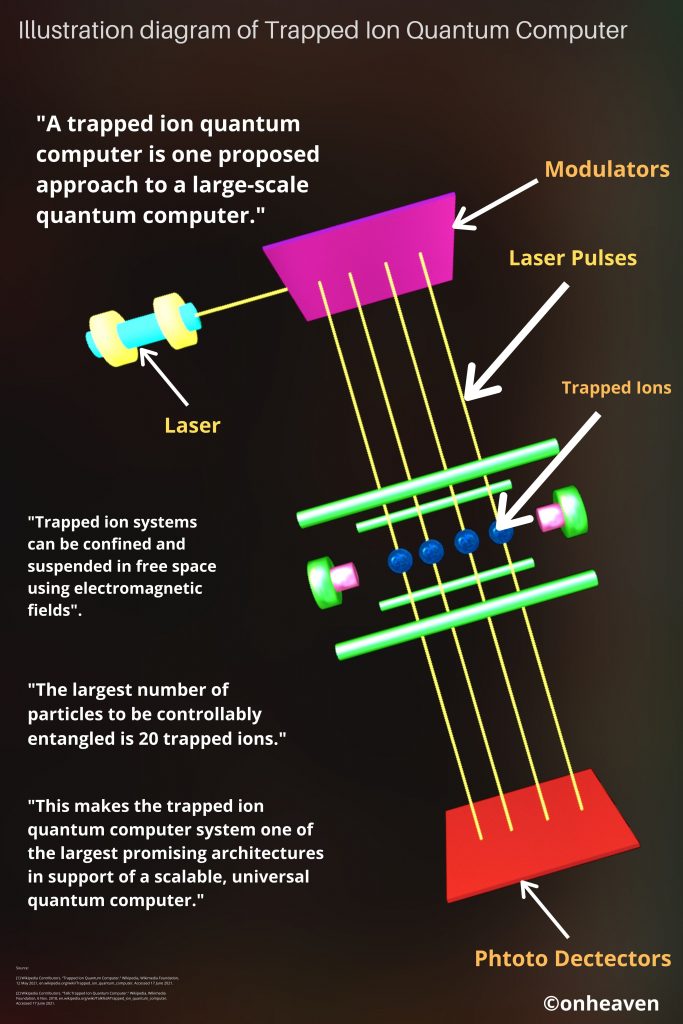Insulators turn up the heat on quantum bits
Ion trap quantum computers are based on quantum properties of light, electrons, and atoms. They can be used to cool charged particles to the lowest temperatures permitted by quantum mechanics. Even the smallest deficiencies can heat up the strongly cooled particles and lead to errors in quantum information processing. Researchers at the university of Innsbruck have found a way to determine the influence of dielectric materials on the charged particles in ion traps.
Quantum Computer: Trapped Ions Quantum Computer with the Simulated Illustrated Diagram

Source:
[1] Wikipedia Contributors. “Trapped Ion Quantum Computer.” Wikipedia, Wikimedia Foundation, 12 May 2021, en.wikipedia.org/wiki/Trapped_ion_quantum_computer. Accessed 17 June 2021.
[2] Wikipedia Contributors. “Talk:Trapped Ion Quantum Computer.” Wikipedia, Wikimedia Foundation, 6 Nov. 2018, en.wikipedia.org/wiki/Talk%3ATrapped_ion_quantum_computer. Accessed 17 June 2021.
[3] staff, Science X. “Insulators Turn up the Heat on Quantum Bits.” Phys.org, Phys.org, 14 June 2021, phys.org/news/2021-06-insulators-quantum-bits.html. Accessed 17 June 2021.
[4] “Insulators Turn up the Heat on Quantum Bits.” ScienceDaily, 2021, www.sciencedaily.com/releases/2021/06/210614153923.htm. Accessed 17 June 2021.
[5] News Break. “Insulators Turn up the Heat on Quantum Bits.” News Break, News Break, 14 June 2021, www.newsbreak.com/news/2280526349616/insulators-turn-up-the-heat-on-quantum-bits. Accessed 17 June 2021.
[6] Thumbnail Image: insspirito. “Fractal Abstract Background – Free Image on Pixabay.” Pixabay.com, 28 Mar. 2016, pixabay.com/illustrations/fractal-abstract-background-physics-1280075/. Accessed 18 June 2021.





